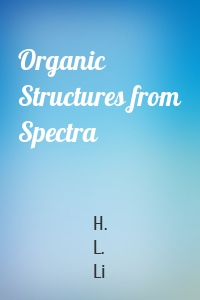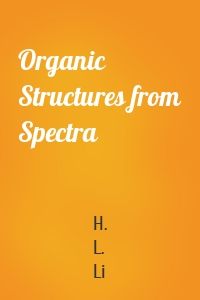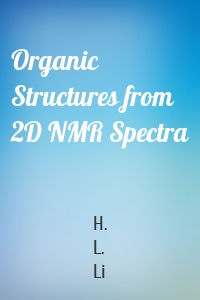H. L. Li
5 кн.
Organic Structures from Spectra
The derivation of structural information from spectroscopic data is now an integral part of organic chemistry courses at all Universities. A critical part of any such course is a suitable set of problems to develop the students’ understanding of how organic structures are determined from spectra. The book builds on the very successful teaching philosophy of learning by hands-on problem solving; carefully graded examples build confidence and develop and consolidate a student’s understanding of...
| Автор | H. L. Li |
Instructor's Guide and Solutions Ma...
The text Organic Structures from 2D NMR Spectra contains a graded set of structural problems employing 2D-NMR spectroscopy. The Instructors Guide and Solutions Manual to Organic Structures from 2D NMR Spectra is a set of step-by-step worked solutions to every problem in Organic Structures from 2D NMR Spectra. While it is absolutely clear that there are many ways to get to the correct solution of any of the problems, the instructors guide contains at least one complete pathway to every one of the...
| Автор | H. L. Li |
Chinese Flower Arrangement
Lavishly illustrated history of Chinese floral art provides practical suggestions for applying traditional methods to modern settings. Features include: selecting flowers for symbolic qualities and beauty, complementing an arrangement with an appropriate vase and accessories, plus 42 illustrations that span centuries of Chinese paintings, prints, tapestries, porcelains.
| Автор | H. L. Li |
Organic Structures from 2D NMR Spec...
The derivation of structural information from spectroscopic data is now an integral part of organic chemistry courses at all Universities. Over recent years, a number of powerful two-dimensional NMR techniques (e.g. HSQC, HMBC, TOCSY, COSY and NOESY) have been developed and these have vastly expanded the amount of structural information that can be obtained by NMR spectroscopy. Improvements in NMR instrumentation now mean that 2D NMR spectra are routinely (and sometimes automatically) acquired...
| Автор | H. L. Li |






